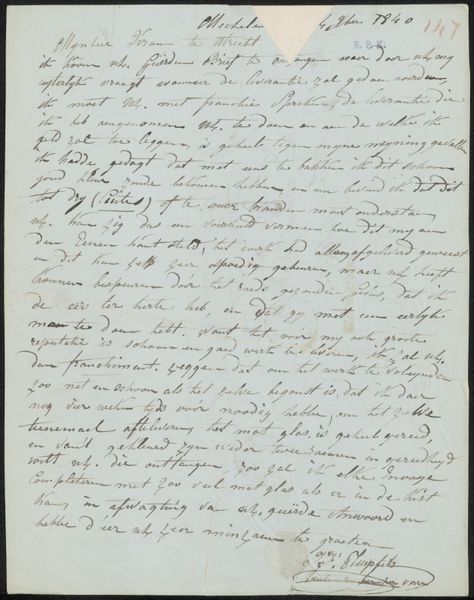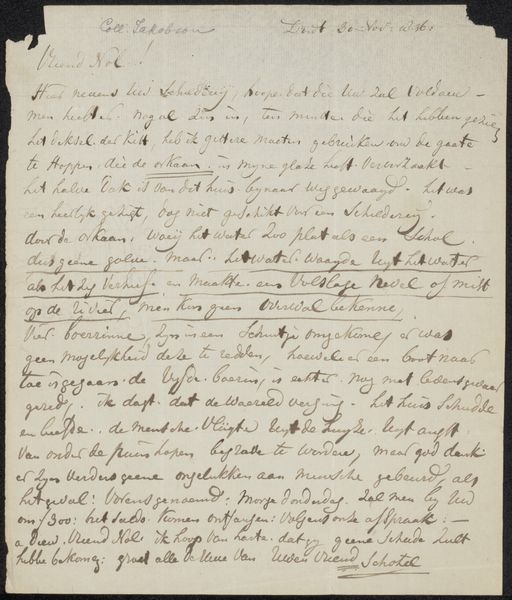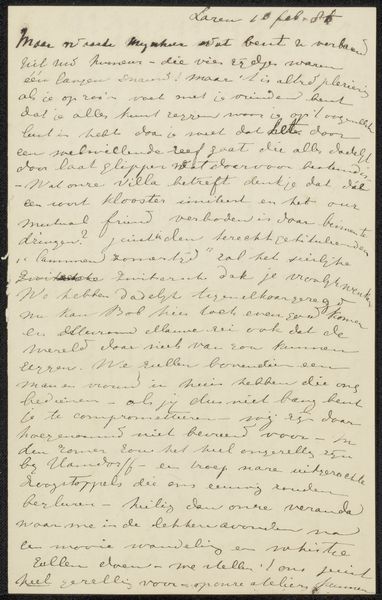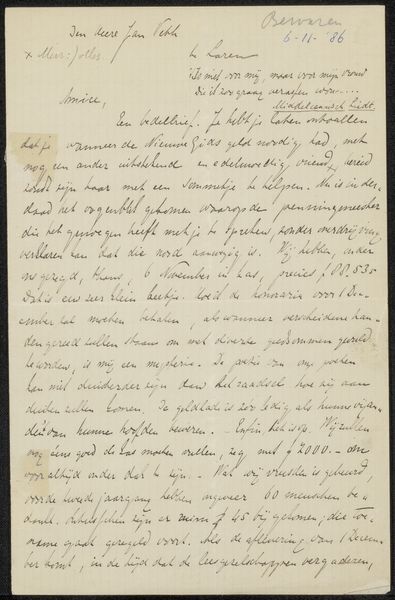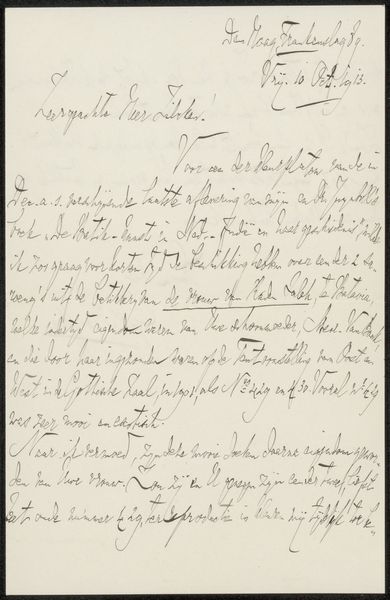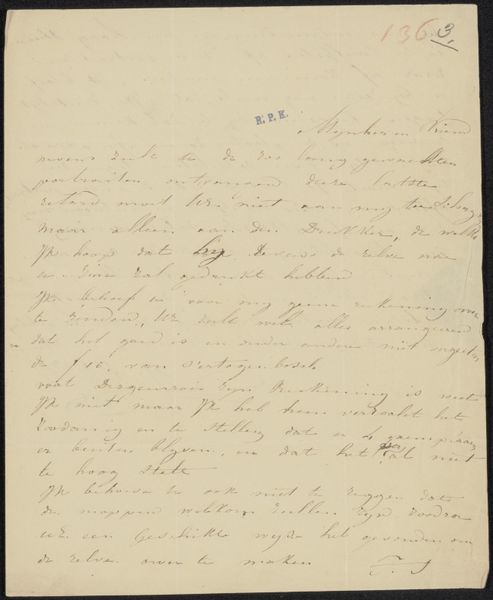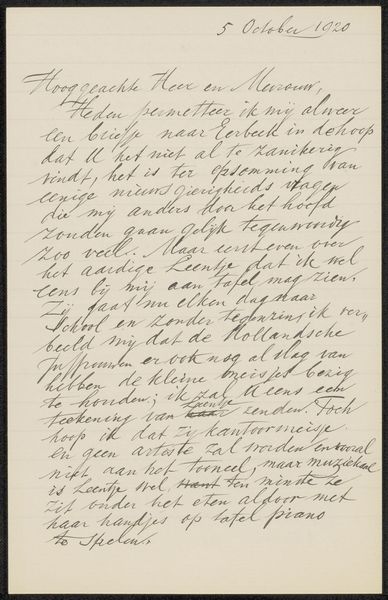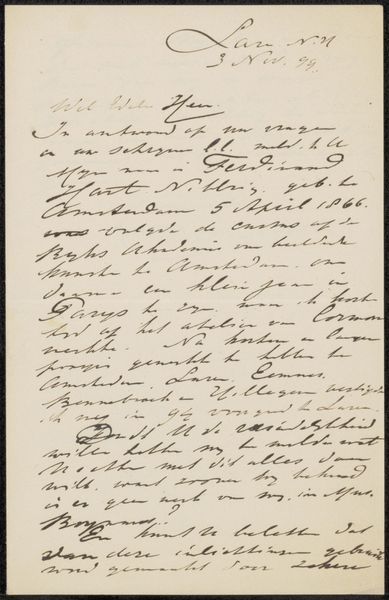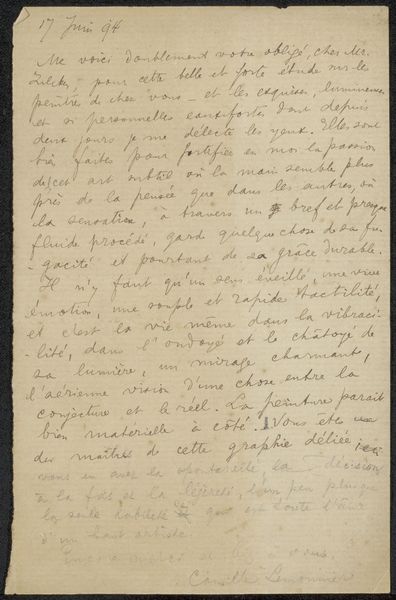
drawing, paper, ink, pen
#
portrait
#
drawing
#
paper
#
ink
#
pen
Copyright: Rijks Museum: Open Domain
Curator: This is "Brief aan Arnoldus Lamme," or "Letter to Arnoldus Lamme," by Johannes Christiaan Schotel, created in 1836. It's currently held at the Rijksmuseum. What are your initial thoughts? Editor: It's fascinating to see a handwritten letter elevated to an artwork. The script seems rushed, almost urgent, yet the presentation in a museum gives it a sense of historical importance. What can you tell me about the cultural context of letter-writing in the 19th century? Curator: Well, in 1836, letters were vital! No internet, no telegraphs yet for most… correspondence was *the* way to maintain connections. It's not just a message, it's a piece of the sender – their handwriting, their thoughts unfiltered. It's intensely personal, like an unbound diary left to discover.. and this artist Schotel has shared his soul openly and unedited! Are you a fan of handwriting as artistic medium? Editor: Absolutely! I'm also thinking about the act of reading it now, as an art object. Is the content secondary to the form, or are they inseparable? Curator: Inseparable, I'd argue. The energy in the writing, that hurried script you noticed, tells us something about Schotel's state of mind as he penned the letter. He may be having an urgent need that's fueling his creative urges. It's like listening to someone's voice; there are subtle emotional fluctuations. Editor: I see what you mean. Now I'm reading it in a different way, considering it a visual representation of the artist's thoughts in that very moment. It bridges a gap between visual and textual, right? Curator: Precisely! It challenges what art is or isn’t and compels us to find deeper personal connection with the human who produced it, to view everyday objects like a handwritten note or receipt as being filled with expressive potential. We can never assume objects are simply "ordinary" - like Van Gogh's empty chair - that one chair represents an actual person and has great intrinsic potential. Editor: That’s a powerful point. I’ll definitely remember that next time I see artwork presented unconventionally. Curator: Exactly! You see the everyday and mundane for so much more!
Comments
No comments
Be the first to comment and join the conversation on the ultimate creative platform.
